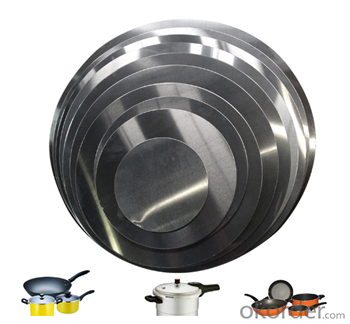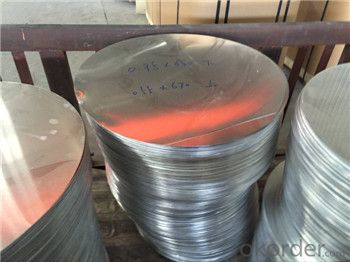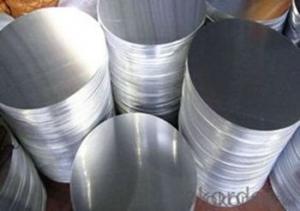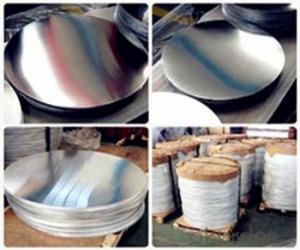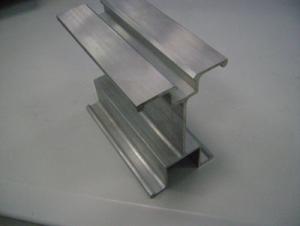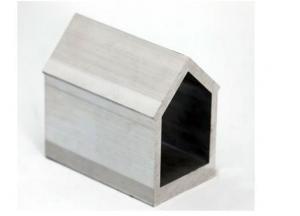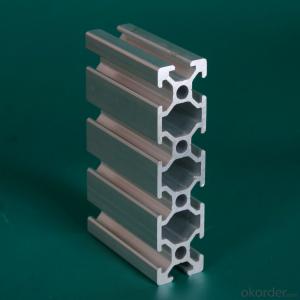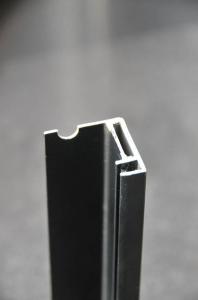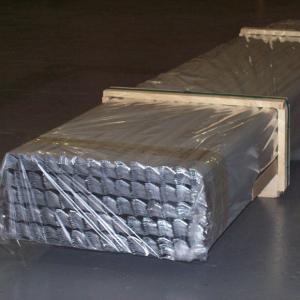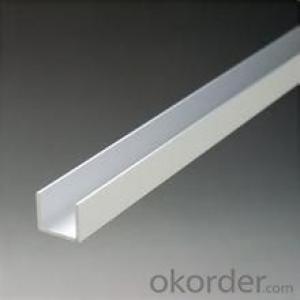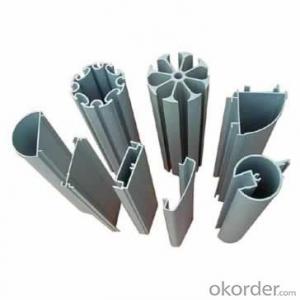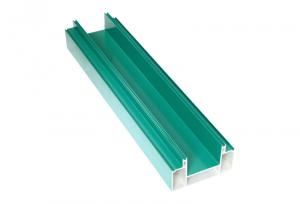Structural Aluminum Extrusion Profiles for High Quality Aluminum Disc Cookware at Great Prices
- Loading Port:
- Qingdao
- Payment Terms:
- TT OR LC
- Min Order Qty:
- 10000 kg
- Supply Capability:
- 100000 kg/month
OKorder Service Pledge
OKorder Financial Service
You Might Also Like
Specification
Aluminum Disc for Cookware
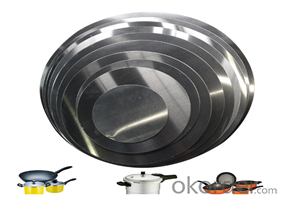
Aluminum Disc for Cookware Description
Aluminum disc is mainly used in making cookware, like non-stick pan, pressure cooker, hardware and pressure cooker and so on. Aluminum circle disc is the most widely used deep drawing products, High tensile strength, good ductility, Anodized quality and deep drawing quality which is suitable for cookware as well.
Aluminum Disc for Cookware Specifications
1.Alloy: 1100, 1050, 1060, 1070, 3003
2. Temper: O, H12, H14 aluminum round plate 1050
3. Thickness: 0.36mm ~ 5mm
4. Diameter: 120mm - 1000mm
Aluminum Disc for Cookware Picture
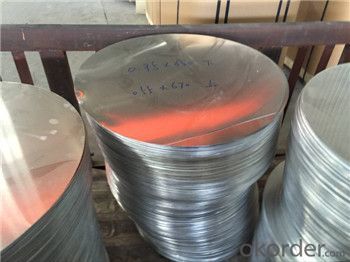
Aluminum Disc for Cookware Features
1. Excellent elongation and tensile strength;
2. Processing performance is good, stamping, stretch forming high performance;
3. Gas welding, hydrogen welding, resistance welding and brazing;
4. High plasticity, conductivity and thermal conductivity;
5. Easy to take all kinds of pressure processing and extension, bending.
Aluminum Disc for Cookware production process
In production,we must handle every link,every detail,and every work properly to ensure a high level of product quality.Therefore,Weihua creater s complete set of process,from aluminum smelting,to casting,cutting,heating and other linkes to track,control and guide the to do high-quality goods.
Introduction of our company
Our company is a professional Aluminium Strip manufacturer and Aluminum Circles manufacturers,mainly supply Aluminium Coil,Aluminum Circles,Aluminium discs,Aluminum Sheet,Aluminum Strip, Household Aluminum Foil,Aluminum Foil for Pharmaceutical Packaging,Aluminum Foil Tape,Aluminum Foil for Air Conditioner,Aluminum Foil for Container etc. series of aluminum products, sincerely welcome everyone to visit.
- Q: This question asks for guidance on selecting a dependable supplier for aluminum profiles, which are essential for various industries.
- <p>To choose a reliable supplier of aluminum profiles, consider the following: Check their industry experience and reputation. Look for certifications and quality management systems like ISO standards. Evaluate their product quality by requesting samples and conducting tests. Assess their delivery times and reliability. Ensure they have a wide range of profiles to meet diverse needs. Investigate customer reviews and testimonials for insights into their service. Finally, consider the cost-effectiveness of their products without compromising on quality.</p>
- Q: This question asks for a method to determine whether the building materials include aluminum profiles.
- <p>To determine if your current building uses aluminum profiles, you can start by examining the visible structural components such as window frames, door frames, and support beams. Look for the characteristic silvery color and smooth finish of aluminum. You can also check the building's documentation or blueprints, if available, for material specifications. Consulting with the building's architect or engineer can provide definitive information. In some cases, a non-destructive testing method like ultrasonic testing might be used to identify materials without damaging the structure.</p>
- Q: Are aluminum profiles suitable for protective enclosures?
- Yes, aluminum profiles are indeed suitable for protective enclosures. Aluminum is a lightweight yet strong material that offers excellent durability and corrosion resistance. It can effectively protect the contents of an enclosure from external elements such as dust, moisture, and impacts. Additionally, aluminum profiles can be easily customized and fabricated to meet specific design requirements, making them a versatile choice for protective enclosures in various industries.
- Q: What is the difference between 6061-T6 and 6063-T6 in aluminum profile?
- Alloy composition is different, 6061 of the other alloy composition is much higher than 6063.
- Q: This question asks for a list of various materials that are used in the production of aluminum profiles.
- <p>Aluminum profiles are primarily made from aluminum alloys, which are composed of aluminum combined with other elements to enhance their properties. Common materials used include 6063 aluminum alloy, known for its excellent extrudability and weldability, making it ideal for a wide range of applications. 6061 aluminum alloy is also used for its high strength and good corrosion resistance, suitable for structural components. Other alloys such as 6082 and 7075 are utilized for their superior strength-to-weight ratios, often found in aerospace and automotive industries. Additionally, aluminum profiles may incorporate materials like magnesium, silicon, copper, and manganese to achieve specific mechanical properties or corrosion resistance tailored to particular applications.</p>
- Q: This question asks for methods to prevent aluminum profiles from rusting during the transportation process.
- <p>To prevent rusting of aluminum profiles during transportation, ensure proper packaging with moisture-resistant materials. Use protective films or covers to shield the profiles from direct contact with moisture and humidity. Maintain a controlled environment in the transport vehicle, avoiding high humidity and condensation. Regularly inspect the profiles for any signs of moisture or damage and address them promptly. Additionally, consider using rust inhibitors or anti-corrosion coatings on the aluminum profiles before packaging. Always handle the profiles with care to avoid scratches or damage that could lead to rusting.</p>
- Q: This question asks for a method to determine the quantity of aluminum profiles required for a construction project.
- <p>To calculate the amount of aluminum profiles needed for a building project, follow these steps: 1. Determine the design specifications and dimensions of the project, including the length, width, and height of the structure. 2. Identify the types and sizes of aluminum profiles required based on the structural needs and design. 3. Calculate the total linear footage of each profile type needed by multiplying the length of each required section by the number of sections. 4. Add up the total linear footage for all profile types. 5. Account for waste and cutting losses, typically adding 5-10% to the total. 6. Ensure the calculations comply with building codes and safety standards. Consult with engineers or architects if necessary.</p>
- Q: This question asks for various methods to enhance the heat transfer efficiency of aluminum profiles.
- <p>Improving the thermal performance of aluminum profiles can be achieved through several methods: 1. Material Selection: Choose aluminum alloys with higher thermal conductivity for better heat transfer. 2. Design Optimization: Design profiles with larger surface areas to increase heat dissipation. 3. Fins and Ribs: Incorporate fins or ribs to increase the surface area and enhance heat dissipation. 4. Coating: Apply thermally conductive coatings to improve heat transfer. 5. Insulation: Use thermal insulation to reduce heat loss. 6. Heat Sinks: Integrate heat sinks to dissipate heat more effectively. 7. Composite Materials: Combine aluminum with other materials to improve thermal properties. 8. Manufacturing Techniques: Employ advanced manufacturing techniques to create more efficient profiles. Each method can be tailored to specific applications to achieve optimal thermal performance.</p>
- Q: Are aluminum profiles suitable for automotive racks and carriers?
- Yes, aluminum profiles are suitable for automotive racks and carriers. Aluminum is a lightweight and strong material, making it ideal for applications where weight reduction is important, such as automotive racks and carriers. Aluminum profiles can be designed and engineered to meet specific requirements, allowing for customization and versatility. Additionally, aluminum is corrosion-resistant, ensuring the durability and longevity of automotive racks and carriers, even in harsh weather conditions. The material's high strength-to-weight ratio also contributes to improved fuel efficiency and reduced emissions. Overall, aluminum profiles provide a reliable and efficient solution for automotive racks and carriers.
- Q: What are the different types of protective coatings for aluminum profiles?
- There are several different types of protective coatings available for aluminum profiles. These coatings are designed to enhance the durability and longevity of the aluminum, while also providing aesthetic appeal. Some of the common types of protective coatings for aluminum profiles include: 1. Anodizing: Anodizing is one of the most popular and widely used protective coatings for aluminum. It involves an electrochemical process that creates a thin, transparent layer of aluminum oxide on the surface of the metal. This layer provides excellent corrosion resistance and can be further enhanced with various dye colors. 2. Powder Coating: Powder coating is a dry finishing process that involves applying a free-flowing, electrostatically charged powder onto the aluminum surface. The powder is then cured under heat, creating a durable and protective coating. Powder coating offers excellent resistance to impact, chemicals, and corrosion, and it provides a uniform and attractive finish. 3. Paint Coating: Paint coatings are commonly used for aluminum profiles, especially in applications where aesthetics is important. These coatings can be applied using various methods such as spraying, brushing, or dipping. Paint coatings provide protection against corrosion, UV rays, and other environmental factors, while also offering a wide range of color options. 4. E-Coating: E-coating, also known as electrocoating or electrophoretic deposition, is an immersion-based coating process. It involves submerging the aluminum profiles in a tank filled with a water-based paint solution and applying an electric current. This causes the paint particles to migrate and deposit onto the aluminum surface, resulting in a uniform and protective coating. E-coating provides excellent corrosion resistance and is often used as a primer before applying other coatings. 5. Clear Coating: Clear coatings are transparent protective layers that are often used to preserve the natural appearance of aluminum profiles while providing protection against corrosion and other environmental factors. These coatings can be applied as clear lacquers or clear anodizing, depending on the desired level of protection. It is important to consider the specific requirements of your aluminum profiles and the intended application when choosing a protective coating. Factors such as durability, corrosion resistance, aesthetics, and cost should be taken into account to ensure the best choice for your specific needs.
Send your message to us
Structural Aluminum Extrusion Profiles for High Quality Aluminum Disc Cookware at Great Prices
- Loading Port:
- Qingdao
- Payment Terms:
- TT OR LC
- Min Order Qty:
- 10000 kg
- Supply Capability:
- 100000 kg/month
OKorder Service Pledge
OKorder Financial Service
Similar products
Hot products
Hot Searches
Related keywords


